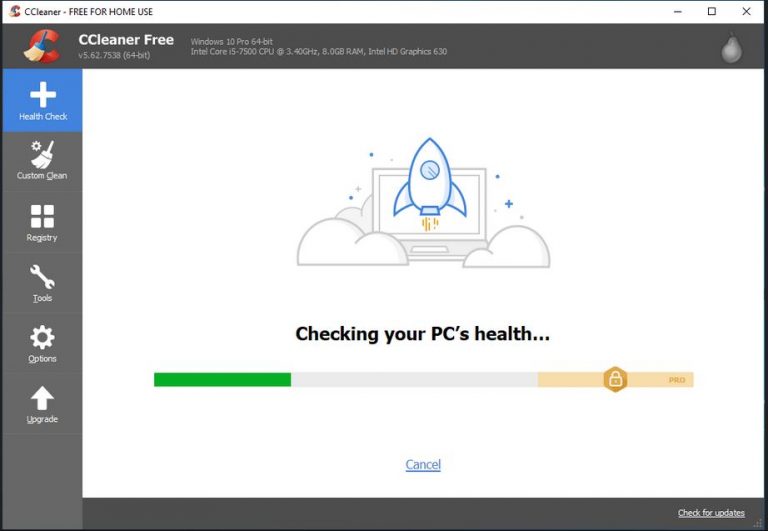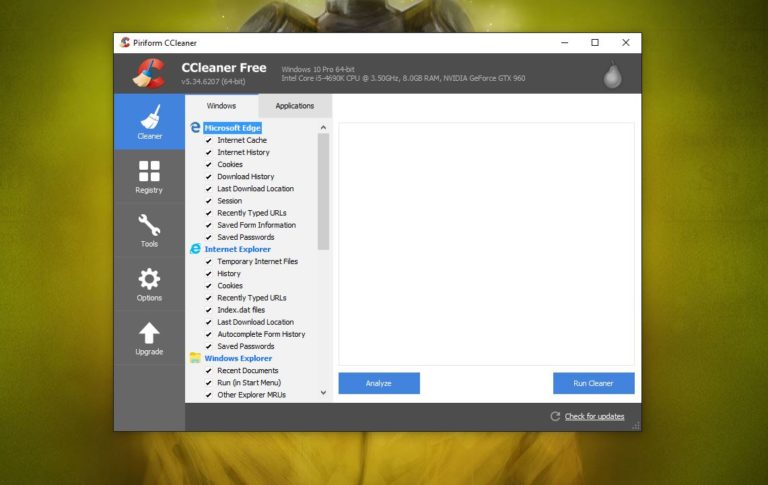

- #Ccleaner malware seconds update#
- #Ccleaner malware seconds archive#
- #Ccleaner malware seconds code#
- #Ccleaner malware seconds download#
“In analyzing the delivery code from the C2 server, what immediately stands out is a list of organizations, including Cisco, that were specifically targeted through delivery of a second-stage loader.
#Ccleaner malware seconds archive#
The archive files also showed Cisco’s research activity in the contents of the included MySQL database. Upon checking, the files were found to be legitimate and based upon the server configuration files. However, we were able to quickly verify that the files were very likely genuine based upon the web server configuration files and the fact that our research activity was reflected in the contents of the MySQL database included in the archived files.” CCleaner Malware Attack: The High-Profile TargetsĪccording to the analysts from Talos, during their investigation, they were provided with an archive containing files that were stored on the CCleaner malware attack C2 server.

Initially, we had concerns about the legitimacy of the files. “During our investigation we were provided an archive containing files that were stored on the C2 server. On a recent report released by Cisco Talos, they said: However, a thorough analysis of the alleged hackers’ command-and-control or C2 server, where the CCleaner malware was connected, gave researchers from Talos enough evidence of the existence of a second payload that was only delivered to a particular set of computers based on local domain names. #CiscoTalos found #CCleanerMalwareAttack to be bigger than what they first thought! Click To Tweet
#Ccleaner malware seconds update#
That time, the researchers assured everyone that there’s no second stage malware used to execute the massive attack and that affected users, around 2.3 million users worldwide, can just simply update their downloaded V5.33 to V5.44 or higher to get rid of the malicious program. Apparently, the breach enabled the unknown group of hackers to replace the legitimate program with a copycat malware version.

#Ccleaner malware seconds download#
Last Monday, news of the CCleaner malware attack made headlines after threat analysts from Cisco Talos found a security breach on the server which handles the download of CCleaner Version 5.33. and 100,000 in Canada.Įnjoy your read? Check out our other content here.A few days after uncovering the CCleaner malware attack, researchers found out that some high-profile technology companies were the main target of the attackers. Equifax staff advised breach victims on Twitter at least 8 times to access instead of, the website created by the credit reporting agency following the hacker attack that affected as many as 143 million consumers in the U.S., 400,000 in the U.K. A recent report by fellow cyber-security firm Kaspersky found that cryptocurrency mining malware also infected over 1.65 million machines running Kaspersky solutions in the first eight months of the year.Įquifax Sent Breach Victims to Fake WebsiteĮquifax has made another blunder following the massive data breach suffered by the company – it advised some customers on Twitter to access a fake support website set up by a security researcher. The malware injected into #CCleaner has shared code with several tools used by one of the APT groups from the #Axiom APT 'umbrella'.Īttackers Take Over WordPress, Joomla, JBoss Servers to Mine MoneroĪttacks aimed at delivering cryptocurrency mining tools on enterprise networks have gone up significantly, according to telemetry data collected by IBM’s X-Force team between January and August 2017. Thin lines connect evidence collected from the CCleaner incident to the activity of a cyber-espionage group that goes primarily by the name of Axiom, but is also referenced as APT17, DeputyDog, Tailgater Team, Hidden Lynx, Voho, Group 72, or AuroraPanda. The CCleaner hack that took place over the summer and came to light this week might have been carried out by an infamous cyber-espionage group, believed to be operating out of China, and which targeted a list of who’s who of western tech companies. On Wednesday, SEC Chairman Jay Clayton said one of the financial regulator’s databases, containing corporate announcements, was compromised and may have been used to gain an advantage in stock trading.ĬCleaner Hack Carried Out In Order to Target Big Tech Companies The SEC has admitted to being hacked in 2016, with illegal trading potentially at the root of the breach. SEC admits data breach, suggests illicit trading was key


 0 kommentar(er)
0 kommentar(er)
